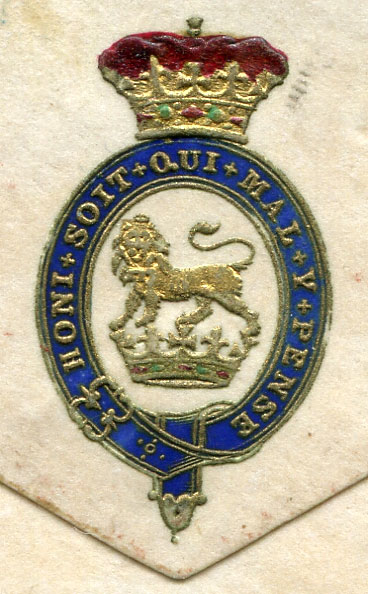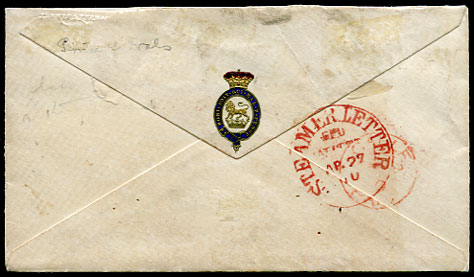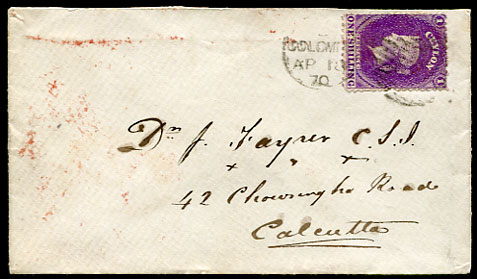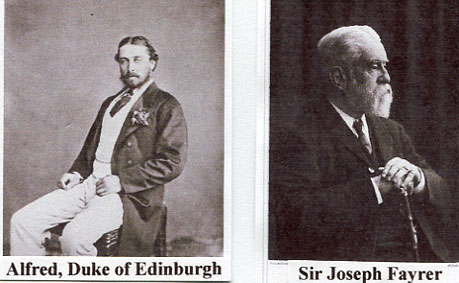



| The "42" Kolkata cover from Prince Alfred, Royal Visit to Ceylon 1870, a unique exhibition item
1870 cover with spectacular four colour Royal Coat-of-Arms printed flap posted by Prince Alfred, Duke of Edinburgh (second son of Queen Victoria born 6 August 1844 and first member of the British Royal family to visit Ceylon) to his eminent friend Dr. Joseph Fayrer C.S.S., 42 Chowringhe Road, Calcutta with QV 1/- reddish lilac tied COLOMBO AP 18 70 duplex paying the double short-lived (1868-1870) 6d rate to India, reverse Galle transit and Calcutta STEAMER LETTER AP 27 70 arrival. (Ceylon was ceded to the British Empire in 1815 and when the Prince arrived March 30 1870 thousands of chiefs, headsman and ordinary people flocked to Colombo. On the day after arrival a grand reception was hosted by Governor Sir Hercules Robinson, and thereafter the Prince made excursions to elephant kraals with gatherings of 10,000 people or more, went elk hunting, elephant shooting, and was lavishly dined throughout, even with gold plates and gold cutlery encrusted with rubies, emeralds and pearls. Prince Alfred, Honorary President 1890-1900 of what is now the Royal Philatelic Society, was the first serious stamp collector in the royal family and it is thought that he encouraged his nephew, later KGV, to collect stamps. Prince Alfred sold his collection to his brother King Edward VII, who shared his enthusiasm, who in turn gave it to his son King George V, and keenly expanded by the latter the two collections became the basis of what is now the Royal Philatelic collection.
Sir Joseph Fayrer (1824-1907) was an English physician noted for his writings on medicine and particularly the treatment of venomous Indian snakebites. In 1847 he was appointed medical officer on H.M.S. Victory and in 1869 accompanied Prince Alfred, as his physician, on his grand tour of India. In 1901 he was appointed Physician Extraordinary to King Edward VII. Eastern India's tallest project, The "42", an iconic 62 storey tower with luxury apartments is planned for 42B Chowringhee Road.
£18500 | |